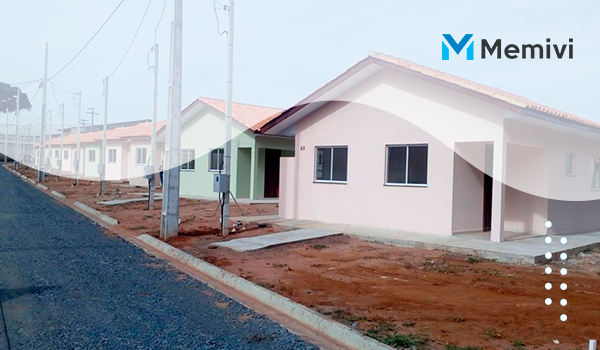
Buying a property is a major milestone, and understanding the role of a mortgage in the USA is crucial. A mortgage is a financial agreement where a lender provides funds for purchasing real estate, secured by the property itself. This guide will delve into how mortgages work, including the various types available, the application process, and important factors to consider. By familiarizing yourself with these details, you can make informed decisions and confidently navigate the property buying process.
Understanding Mortgages in the USA
When buying a property in the USA, understanding the basics of mortgages is essential. A mortgage is a loan specifically used to purchase real estate. In exchange for funds from a lender to buy a home, you agree to pay back the amount plus interest over a specified period, generally 15 to 30 years.
Principal and Interest
The principal is the amount you borrow, and the interest is the lender’s charge for lending you the money. Mortgages come with a fixed or variable interest rate that you’ll find reflected in your monthly payments. Importance of Credit Score Your credit score plays a crucial role in securing a favorable interest rate. A higher score generally means a lower rate, reducing long-term costs.
Down Payment and Loan Eligibility
Most lenders require a down payment, which is an upfront sum of money that you pay towards the property price. This is typically about 20% of the property value, but some loans allow for less. Qualifying for a mortgage also involves various criteria, such as your income, debts, and overall financial health. Role of Mortgage Lenders Mortgage lenders can be banks, credit unions, or independent mortgage companies. They need comprehensive documentation to assess your financial situation. Familiarize yourself with the basic terminology and processes to make informed decisions. This knowledge will enable you to navigate the complexities of securing a mortgage with more confidence.
Types of Mortgages Available

When exploring mortgage options, there are several types of mortgages available to meet different needs:
- Fixed-Rate Mortgages: These loans have a constant interest rate and monthly payments that never change. They’re ideal for those who plan to stay in their home for a long period.
- Adjustable-Rate Mortgages (ARMs): Initial interest rates are usually lower and fixed for a specific period, then they adjust periodically. This option benefits those who might move or refinance before rates adjust.
- FHA Loans: Backed by the Federal Housing Administration, FHA loans are ideal for first-time homebuyers. They require lower down payments and credit scores compared to other loans.
- VA Loans: Available for veterans and active military members, VA loans offer zero down payment options and feature competitive interest rates.
- USDA Loans: Offered to rural and suburban homebuyers who meet income requirements, these loans sometimes require no down payment and provide reduced mortgage insurance premiums.
- Jumbo Loans: Used for homes that exceed the loan limits set by the Federal Housing Finance Agency; they’re more flexible and meet the needs of borrowers purchasing luxury properties.
Each mortgage type has its benefits and limitations, making it crucial for homebuyers to assess their financial situation and future plans when choosing the right loan.
The Mortgage Application Process
Applying for a mortgage in the USA can seem daunting, but understanding the steps involved can make the process smoother. The first step is to gather all necessary documents. This includes your income statements, tax returns, and credit history. Lenders want to ensure that you have a stable financial background.
Once your documents are ready, fill out the mortgage application form. This form asks for details regarding your personal and financial situation. It’s crucial to be honest and thorough while providing this information.
After submitting your application, the lender will initiate the underwriting process. Underwriting involves a detailed evaluation of your financial status and the property you intend to purchase. The lender assesses your ability to repay the loan during this stage.
The next step is the appraisal of the property. The lender requires a professional evaluation to ensure the property’s value matches the sale price. An unbiased appraiser will conduct this assessment.
After the appraisal, you might receive additional conditions to fulfill, like providing more documentation or clarifications. Once satisfied, the lender will offer a mortgage commitment. At this point, you are one step closer to securing your home loan.
Finally, the last part of the application process is the closing. This involves signing all legal documents, including the mortgage contract and transferring ownership. It is often completed with the assistance of a real estate attorney or an escrow company.
Following these steps carefully can help streamline your mortgage application process, making it less stressful and more manageable.
Key Factors to Consider When Buying a Property
Property Location: The location of the property is crucial. Consider the neighborhood, proximity to schools, workplaces, and amenities. Evaluate the growth potential of the area and future development plans.
Loan Terms: Review the terms of the mortgage, including the interest rate, loan tenure, and monthly payments. Compare fixed-rate and adjustable-rate mortgages to determine the best fit for your financial situation.
Credit Score: Your credit score plays a significant role in determining the interest rate you qualify for. A higher score can lead to better loan terms, so check your credit report and address any issues before applying.
Down Payment: Consider how much you can afford for a down payment. Typically, a larger down payment can lower your monthly payments and may even reduce your interest rate.
Closing Costs: Be aware of the costs associated with closing the sale, which can include fees for inspections, legal services, and title insurance. These costs add up, so budget accordingly.
Property Condition: Evaluate the condition of the property you are purchasing. Consider potential repair costs or renovations, and assess whether these fit within your budget and plans.
Market Conditions: Understand the current market trends in real estate. Is it a buyer’s or seller’s market? This can affect property prices and negotiation power.
Lender Reputation: Research the lender’s reputation and customer service. Read reviews and ask for recommendations to ensure a smooth and transparent mortgage process.


 Hacking Your Credit Score <p class='sec-title' style='line-height: normal; font-weight: normal;font-size: 16px !important; text-align: left;margin-top: 8px;margin-bottom: 0px !important;'> Hacking your credit score can significantly impact your financial future </p>
Hacking Your Credit Score <p class='sec-title' style='line-height: normal; font-weight: normal;font-size: 16px !important; text-align: left;margin-top: 8px;margin-bottom: 0px !important;'> Hacking your credit score can significantly impact your financial future </p>  Buying Your First Home: A Step-by-Step Breakdown <p class='sec-title' style='line-height: normal; font-weight: normal;font-size: 16px !important; text-align: left;margin-top: 8px;margin-bottom: 0px !important;'> Buying your first home is an exciting milestone </p>
Buying Your First Home: A Step-by-Step Breakdown <p class='sec-title' style='line-height: normal; font-weight: normal;font-size: 16px !important; text-align: left;margin-top: 8px;margin-bottom: 0px !important;'> Buying your first home is an exciting milestone </p>  The Ultimate Guide to 401(k)s and IRAs <p class='sec-title' style='line-height: normal; font-weight: normal;font-size: 16px !important; text-align: left;margin-top: 8px;margin-bottom: 0px !important;'> The Ultimate Guide is your key to unlocking expert success in your field </p>
The Ultimate Guide to 401(k)s and IRAs <p class='sec-title' style='line-height: normal; font-weight: normal;font-size: 16px !important; text-align: left;margin-top: 8px;margin-bottom: 0px !important;'> The Ultimate Guide is your key to unlocking expert success in your field </p>